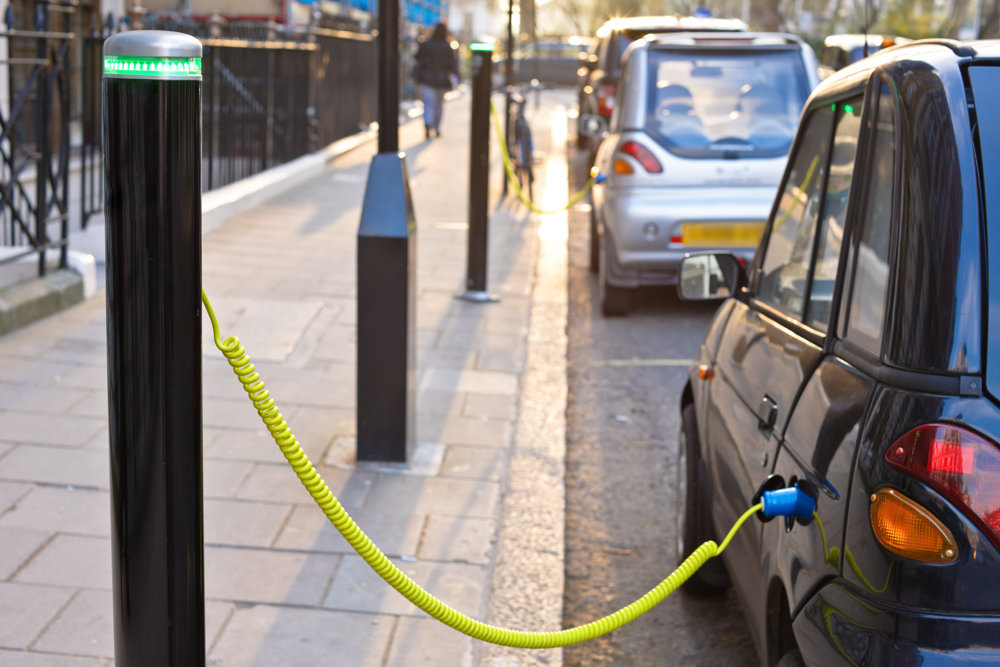At the start of this year we posted a blog on the future of diesel vehicles, which explored the relationship between diesel vehicle emissions and poor air quality. We looked at the chequered history of legislation and guidance relating to diesel emissions and considered possible options for future air quality planning in relation to vehicle emissions.
Now, SMMT (Society of Motor Manufacturers and Traders) has published the New Car CO₂ Report 2018, which reports on the stats, trends and action that is taking place within the motor industry as we move to a low carbon future.
It should be noted here that all data from new models that are a type approved since September 2017, is derived from the new WLTP test (World Harmonised Light Vehicle Test Procedure). Prior to this, the NEDC (New European Driving Cycle) test was used. It is understood that the WLTP test is undertaken over a new, more representative drive cycle, under strict procedures and takes 50% longer to complete. This should go some way to ensure that the results forecast will be more representative of those found in real-world conditions.
In this blog we’re going to look at the findings of the report.
Is the 2018 report good news for air quality?
On the whole, according to the SMMT report, the news is good. Analysis of the UK average new car CO₂ emissions (registration weighted), shows an almost consistent year-on-year lowering of emissions over the past twenty years. The figure for 1997 is 189.8g/km, falling to 120.1g/km in 2016. ‘Almost consistent’, because in 2017 the figure rose to 121.0g/km, almost back to the 2015 figure of 121.4g/km.
Why, after 19 years of consistent falling in emissions, should the figure increase for 2017?
The SMMT report also found that the 2017 rise reflected on-going market trends, particularly the consumer shift towards larger vehicles, alongside a 17.1% drop in diesel registrations. It may also be a reflection of the new more stringent WLTP testing regime, introduced in 2017.
Diesel vehicles typically emit 15%-20% lower CO2 than petrol cars with like-for-like performance. However, as stated in our earlier blog, it’s important to note that diesel cars are generally recognised as the main transport source of both primary NO2 (nitrogen dioxide) and NOx (Nitrous oxides), which are considered to be the main culprit for a UK daily death toll of 64 people, owing to poor air quality.
So, while the reduction in sales of diesel cars may have resulted in an increased figure for CO₂, it could also represent a reduction in NO2 and PM10, accepting that not all diesel cars are high polluters.
Looking at the 2016 / 2017 comparison more closely, we can see that the CO2 anomaly doesn’t apply to all vehicles. In fact, when it comes to light commercial vehicles (LCVs), the difference in emissions between the two years was seen to be particularly positive:
The average new light commercial vehicle (LCV, or van) emitted 165.4g/km in 2017, 4.8% below the 2016 level. This is a significant pick up in the rate of improvement, and 16.5% down on 2011.
Even in the case of cars, the 2017 figure appears to be little more than a blip in what overall shows significant achievement in the effort to reduce CO₂.
The report states that a 2017 car now has, on average, CO2 emissions 33.1% lower than in 2000, and 20% lower than the average car in use.
What’s driving these reductions in CO2 emissions?
While there is still a lack of clarity and consistency in government guidance on CO₂ emissions for diesel cars, the automotive industry has been doing much to lead the way on cleaner air quality.
According to SMMT, the automotive industry has spent billions of pounds developing advanced engine, fuel and battery technologies to help drive down CO2 emissions.
How are improvements to emissions being achieved?
Improvements in CO₂ emission reduction is generally down to advances in new car technology. New cars on sale in 2017 were recorded to emit 12.6% less carbon dioxide than the equivalent older models. Major investment by manufacturers into advanced powertrains, lightweight materials and aerodynamics, all mean that new cars are becoming ever more efficient.
More aerodynamic design is being achieved with more efficient body design together with low-rolling resistance tyres.
Light weighting is being achieved through the use of advanced materials, such as aluminium, plastic composites and carbon fibre.
What about alternative fuel sources?
Then there is the growth in sales of zero emissions vehicles. Zero emission battery electric vehicles took a 0.5% share of the market, plug-in hybrids a 1.3% share and conventional hybrid electric vehicles a 2.9% share in 2017.
Public demand for alternatively fuelled vehicles (AFV) is growing. AFV registrations rose in 2017, up 34.8% to give them a 4.7% share of the market. AFVs emitted on average 44% lower CO2 than the market average.
However, according to SMMT chief executive, Mike Hawes, the uptake of AFVs is not sufficient to push CO2 levels back down to 2015 levels and continue a downward trajectory.
“The industry shares government’s vision of a low carbon future and is investing to get us there – but we can’t do it overnight; nor can we do it alone. The anti-diesel agenda has set back progress on climate change, while electric vehicle demand remains disappointingly low amid consumer concerns around charging infrastructure availability and affordability. To accelerate fleet renewal, motorists must have the confidence to invest in the cleanest cars for their needs – however they are powered. A consistent approach to incentives and tax, and greater investment in charging infrastructure will be critical. Now, more than ever, we need a strategy that allows manufacturers time to invest, innovate and sell competitively, and which gives consumers every incentive to adapt.”
It seems that despite a growing range of AFVs on the market, they are not yet ticking enough boxes for motorists.
What next for reducing CO2 emissions?
It is clear that both industry and government are moving in the right direction but that more needs to be done in order for emissions to reduce, year-on-year, at a rate that will have significant impact on air quality, health and the environment overall.
The SMMT report focussed predominantly on CO2 emissions, but it is important that all pollutants are taken into account when looking at making lasting improvements to air quality. This means looking at NO2, PM10x, PM2.5 and ultra fines as well as original source energy of electric cars. While electric cars may be classed as zero emissions, the source of their electricity may well be creating emissions elsewhere. A holistic, pan-environmental approach is needed.
In our earlier blog, we said that ‘the route to clean air in the UK is a divergent and convoluted path, which is still very far from clear’. Does the SMMT report demonstrate a change of direction in that path?
The answer is that the CO2 reductions it describes, and the efforts being made by the automotive industry in technology and design are all very good news for cutting pollutants and improving air quality. However, there remains the problem of a diversity of interests alongside different approaches in England, Scotland and Wales. In the light of the Government’s recent third loss at the High Court in relation to its current air quality plans, it would appear our path is still very much divergent and convoluted. However, in the absence of a holistic plan to tackle it, it may be that technological investment by manufacturers, driven by consumer pressure, proves to be the fastest route to clean air for the UK.








